
A prisoner of war (POW) is a person who is held captive by a belligerent power during or immediately after an armed conflict. The earliest recorded usage of the phrase "prisoner of war" dates back to 1610.

The Malmedy massacre was a German war crime committed by soldiers of the Waffen-SS on 17 December 1944 at the Baugnez crossroads near the city of Malmedy, Belgium, during the Battle of the Bulge. Soldiers of Kampfgruppe Peiper summarily killed eighty-four U.S. Army prisoners of war (POWs) who had surrendered after a brief battle. The Waffen-SS soldiers had grouped the U.S. POWs in a farmer's field, where they used machine guns to shoot and kill the grouped POWs; the prisoners of war who survived the gunfire of the massacre were killed with a coup de grâce gunshot to the head.
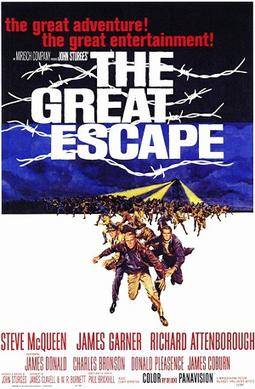
The Great Escape is a 1963 American epic war suspense adventure film starring Steve McQueen, James Garner and Richard Attenborough and featuring James Donald, Charles Bronson, Donald Pleasence, James Coburn, Hannes Messemer, David McCallum, Gordon Jackson, John Leyton and Angus Lennie. It was filmed in Panavision, and its musical score was composed by Elmer Bernstein.

The Bataan Death March was the forcible transfer by the Imperial Japanese Army of 75,000 American and Filipino prisoners of war (POW) from the municipalities of Bagac and Mariveles on the Bataan Peninsula to Camp O'Donnell via San Fernando.

Cowra is a small town in the Central West region of New South Wales, Australia. It is the largest population centre and the council seat for the Cowra Shire, with a population of 9,863.
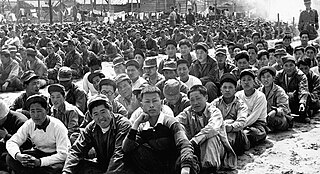
A prisoner-of-war camp is a site for the containment of enemy fighters captured as prisoners of war by a belligerent power in time of war.

The Raid at Cabanatuan, also known as the Great Raid, was a rescue of Allied prisoners of war (POWs) and civilians from a Japanese camp near Cabanatuan, Nueva Ecija, Philippines. On January 30, 1945, during World War II, United States Army Rangers, Alamo Scouts and Filipino guerrillas liberated more than 500 from the POW camp.

The Cowra breakout occurred on 5 August 1944, when 1,104 Japanese prisoners of war attempted to escape from a prisoner of war camp near Cowra, in New South Wales, Australia. It was the largest prison escape of World War II, as well as one of the bloodiest. During the escape and ensuing manhunt, four Australian soldiers were killed and 231 Japanese soldiers were killed or committed suicide. The remaining escapees were re-captured and imprisoned.

The Parit Sulong Massacre was a Japanese war crime committed by members of the Imperial Japanese Army on 22 January 1942 in the village of Parit Sulong, British Malaya. Soldiers of the Imperial Guards Division summarily executed approximately 150 wounded Australian and Indian prisoners of war who had surrendered.
Hugh Vincent Clarke was an Australian soldier, public servant and author, specialising in military history.

Featherston prisoner of war camp was a camp for captured Japanese soldiers during World War II at Featherston, New Zealand, notorious for a 1943 incident in which 48 Japanese and one New Zealander were killed. The camp had been established during World War I as a military training camp and had also been used as an internment camp from 1918 to 1920, when 14 German internees remained there.
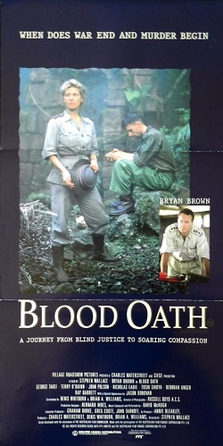
Blood Oath, known in some countries as Prisoners of the Sun, is a 1990 Australian drama film directed by Stephen Wallace and co-written by Denis Whitburn and Brian A. Williams. The film stars Bryan Brown, George Takei, Terry O'Quinn, John Bach, John Clarke, Deborah Kara Unger, John Polson, Nicholas Eadie, David Argue and Ray Barrett. The film is based on the real-life trial of Japanese soldiers for war crimes committed against Allied prisoners of war on the island of Ambon, in the Netherlands East Indies (Indonesia), such as the Laha massacre of 1942.
Changi is a six-part Australian television miniseries broadcast by ABC TV in 2001. It originally aired from 14 October 2001 to 18 November 2001.

Benjamin Gower Hardy, GC, known as Ben Hardy, was an Australian soldier who was posthumously awarded the George Cross for the gallantry he showed during the Cowra breakout, on 5 August 1944, when Japanese prisoners of war staged a mass escape from a prisoner-of-war camp at Cowra, New South Wales.
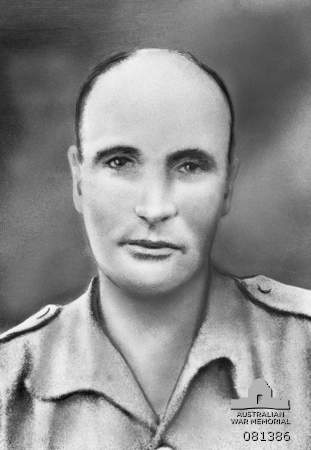
Ralph Jones, GC was an English-born Australian soldier who was posthumously awarded the George Cross for the gallantry he showed when Japanese prisoners of war staged an escape attempt on 5 August 1944 in Cowra, New South Wales.

During World War II, it was estimated that between 35,000 and 50,000 members of the Imperial Japanese Armed Forces surrendered to Allied servicemembers prior to the end of World War II in Asia in August 1945. Also, Soviet troops seized and imprisoned more than half a million Japanese troops and civilians in China and other places. The number of Japanese soldiers, sailors, marines, and airmen who surrendered was limited by the Japanese military indoctrinating its personnel to fight to the death, Allied combat personnel often being unwilling to take prisoners, and many Japanese soldiers believing that those who surrendered would be killed by their captors.

Petty Officer Hajime Toyoshima was a Japanese airman in World War II. His A6M Zero was the first of that type to be recovered relatively intact on Allied territory when he crash landed on Melville Island, Northern Territory, Australia.
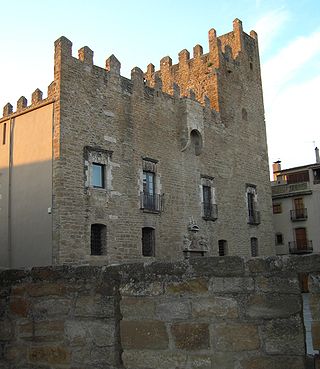
In the Battle of La Bisbal on 14 September 1810 a Spanish division led by Henry O'Donnell and supported by an Anglo-Spanish naval squadron led by Francis William Fane and Charles William Doyle surprised an Imperial French brigade commanded by François Xavier de Schwarz. The Imperial troops were from the Confederation of the Rhine, a collection of small German states that were allied to Napoleon. Part of a division led by Marie François Rouyer, Schwarz's brigade was almost completely wiped out, most of its soldiers being taken prisoner along with its commander. One of the few Allied casualties was the capable O'Donnell, wounded in the foot. The battle occurred during the Peninsular War, part of the Napoleonic Wars.

Cowra Prisoner of War Camp Site is a heritage-listed former prisoner-of-war camp at Evans Street, Cowra, Cowra Shire, New South Wales, Australia. The camp was built from 1941 to 1944. It was the location of the infamous Cowra breakout in 1944. The property is owned by the Cowra Shire Council. It was added to the New South Wales State Heritage Register on 2 April 1999.

















